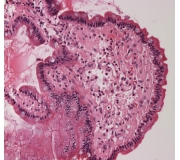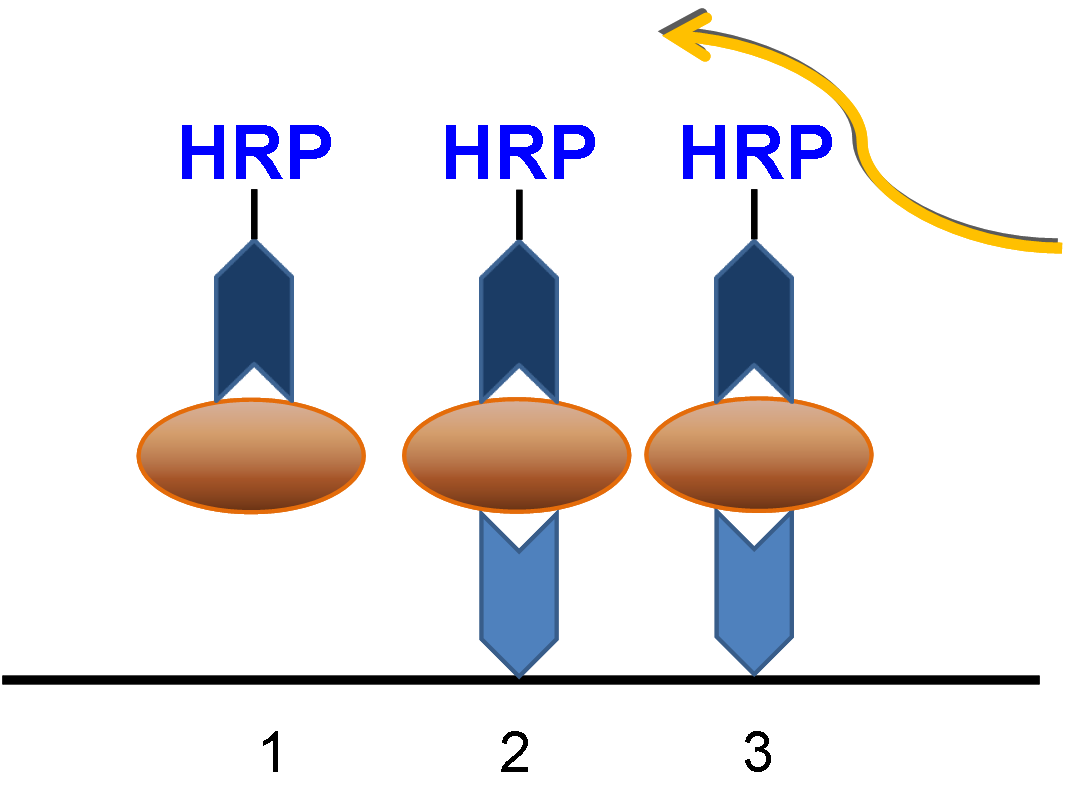Canine Amyloid-Beta(1-42) ELISA Kits. Part Nos. cABeta1-42 & c2ABETA1-42-ELISA . KW canine beta-amyloid 1-42, canine AB1-42
 Click to enlarge |
|
|
Canine Amyloid-Beta (1-42; Abeta1-42, AB1-42) ELISA Assay Kit
Dimentia Disease and Amyloid Synthesis and Degradation Pathway ELISA Kit Product Line
Highlights
(Lead time: 2 weeks. Use the protocol shipped with the kit for your experiment).
Specifications:
Standard Concentration: 1280pg/ml
Assay Range: 10pg/ml→1000pg/ml
Sensitivity: 6.125pg/ml
Kit Contents
For canine Aß(1-40) ELISA Kit, click here
Background on Protein Targets of the Amyloid ELISA Kits Amyloid-Beta: Aged canines accumulate human-type amyloid-beta peptide and undergo declines in cognitive function1,2. Amyloid-beta concentrations in cerebral-spinal fluid appear to reflect amyloid-beta accumulation in brain1,2. Amyloid-beta peptides, and secretases in canine are similar to human1. Therefore, canine amyloid-beta accumulation and decline in cognitive function are being employed as an animal model for the onset of dimentia disease in humans. Amyloid-Beta (Aβ) is generated by sequential cleavage by beta and gamma secretases of the amyloid precursor protein (APP), a transmembrane protein of unknown function. Inhibition of secretase activity has been proposed as a therapeutic strategy to limit amyloid-Beta (Aβ) accumulation. The γ secretase, which produces the C-terminal end of the Aβ peptide, cleaves within the transmembrane region of APP and generates amyloid-Beta (Aβ) isoforms of 36-43 amino acid residues in length. The most common isoforms of amyloid-Beta are Aβ40 and Aβ42. The shorter amyloid-Beta isoform is produced by cleavage in the endoplasmic reticulum, while the longer isoform is processed in the trans-Golgi network. Aβ40 is the most common amyloid-Beta (Aβ) isoform, but Aβ42 is the more fibrillogenic and thus the predominant form associated Alzheimer’s disease. Antibodies employed in this Amyloid-Beta ELISA kit are selective for the Aβ42 isoform of amyloid-beta, with insignificant cross-reactivity to the Aβ40isoform.
Background References:
Methods Overview:
The included ELISA micro-strip plate is provided pre-coated with an a monoclonal capture antibody selective to the antigen. Samples are pre-mixed with a biotin-linked detection antibody and streptavidin-HRP, which are then added to the plate. The plate is washed after a 60 min incubation period. Color reagents are added, resulting in a reaction with HRP that yields a blue colored solution. A stop solution is applied to terminate the reaction, and the solution is measured at 450nm.
Representative Sandwich ELISA Methods ELISA Assay Steps 
Safety, Storage, Shipping
Safety: Stop solution contains acid. Avoid ingestion, skin and eye contact.
Storage: 4oC, 6 months. Strip plate sections, standard, and other solutions can be stored longer term at -20oC.
Shipping. Overnight domestic delivery recommended. Available for international shipping.
|
 Products
Products Manuals
Manuals




